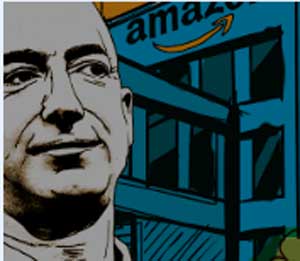| |
|
|
| |
|
|
 |
Supply
Chain by the Numbers |
|
| |
|
|
| |
March 13, 2025
|
|
| |
|
|
| |
|
|
| |
|
|
| |
Swedish Battery-Maker Goes Bust. Tariffs Whack F-150 Costs. Target to Distrbute its Own Produce. Amazon Inceases Retail Share again |
|
| |
| |
| |
| h |
$55 Billion |
|
| That is the value of contracts that Swedish batter-maker Northvolt had signed with electric car and truck OEMs over the past few years. Well now the wait for those batteries delivered is going to take a really, really long time, as Northvolt and various subsidiaries filed for bankruptcy in Sweden this week, bringing to an end a company that was once seen as the future of Europe’s battery production. What happened? It seems to have been a variety of factors, but in the end the company just ran out of cash, starting in late 2024. The weakened demand for electric certainly played a role in that. “With limited time and financial resources available, the company was unable to conclude the necessary agreements to secure its future,” Northvolt said in a statement. Volkswagen is among the large investors that will lose all their money, as the company saw massive losses in recent years. |
| |
| |
| |
|
|
|
| |
| |
|
|
 |
| That is how many temperature-controlled distribution centers Target stores will have on-line after it opens a new one next year in Thornton, Colorado, after launching three new food DCs over the past two years. As part of that changing network strategy, Target will take over grocery distribution versus the wholesalers it previously used to stock its fresh food selection. By taking on that role itself, Target says it will be able to own food-distribution centers to service its stores across the country, giving the company better end-to-end visibility and helping it make more accurate buying decisions and move faster to keep goods in stock, according to a report this week in the Wall Street Journal. |
|
|
|
.
| |
| |
10.7% |

|
| That was Amazon’s share of total US retail spending in Q4, according to a new report from the pymnts.com web site. That number is just the latest data point in Amazon’s relentless growth in capturing retail spend, as it compares to a 4.4% share in Q1 2019. (We’ll note there are different ways to calculate this percentage, such ss what numbers you include it total retail sales, so the share could change depending on that, but SCDigest believes the trend is correct). The rise is total share is of course reflected in gains in many product sectors, the pymnts’ report found. For example, Amazon captured 30% of the total sales in the electronics and appliances sector. |
| |
| Q |
| |
| |
| |
|
|
|
|
|
| |
 |
 |
|
| |
 |
![]() |
 |
|
| |
 |
Feedback |
|
|
|
![]()
|
No Feedback on this article yet.
|
|
![]() |
|
|
|
![]() |
 |
![]() |
 |
|
| |